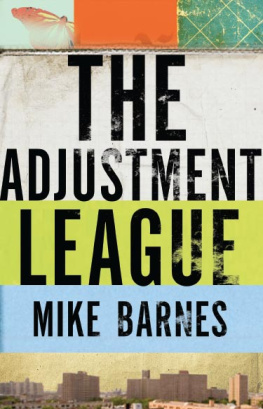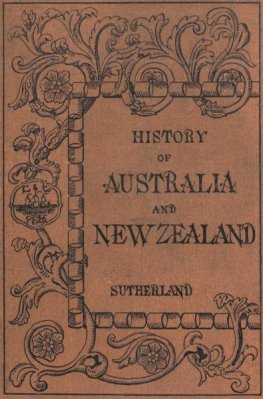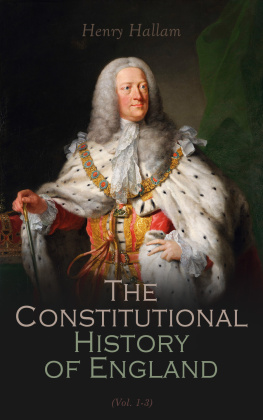Barnes - The beginnings of the cinema in England, 1894-1901. Volume three, 1898
Here you can read online Barnes - The beginnings of the cinema in England, 1894-1901. Volume three, 1898 full text of the book (entire story) in english for free. Download pdf and epub, get meaning, cover and reviews about this ebook. City: England, year: 2014, publisher: National Book Network International;University of Exeter Press, genre: Detective and thriller. Description of the work, (preface) as well as reviews are available. Best literature library LitArk.com created for fans of good reading and offers a wide selection of genres:
Romance novel
Science fiction
Adventure
Detective
Science
History
Home and family
Prose
Art
Politics
Computer
Non-fiction
Religion
Business
Children
Humor
Choose a favorite category and find really read worthwhile books. Enjoy immersion in the world of imagination, feel the emotions of the characters or learn something new for yourself, make an fascinating discovery.

- Book:The beginnings of the cinema in England, 1894-1901. Volume three, 1898
- Author:
- Publisher:National Book Network International;University of Exeter Press
- Genre:
- Year:2014
- City:England
- Rating:3 / 5
- Favourites:Add to favourites
- Your mark:
- 60
- 1
- 2
- 3
- 4
- 5
The beginnings of the cinema in England, 1894-1901. Volume three, 1898: summary, description and annotation
We offer to read an annotation, description, summary or preface (depends on what the author of the book "The beginnings of the cinema in England, 1894-1901. Volume three, 1898" wrote himself). If you haven't found the necessary information about the book — write in the comments, we will try to find it.
Barnes: author's other books
Who wrote The beginnings of the cinema in England, 1894-1901. Volume three, 1898? Find out the surname, the name of the author of the book and a list of all author's works by series.
The beginnings of the cinema in England, 1894-1901. Volume three, 1898 — read online for free the complete book (whole text) full work
Below is the text of the book, divided by pages. System saving the place of the last page read, allows you to conveniently read the book "The beginnings of the cinema in England, 1894-1901. Volume three, 1898" online for free, without having to search again every time where you left off. Put a bookmark, and you can go to the page where you finished reading at any time.
Font size:
Interval:
Bookmark:

______
Volume Three: 1898
This volume is a continuation of the author's two previous books The Beginnings of the Cinema in England and The Rise of the Cinema in Great Britain. Those two books covered the history of the cinema in the United Kingdom up to the end of 1897. The present volume takes us through the year 1898. This was a year in which film producers in England began to turn their attention to the production of simple photoplays, perhaps realising for the first time that the future of the cinema lay in this direction. Among the first producers to grasp the need for this type of film was R. W. Paul, who began to construct a special studio for filming these little plots. France had already taken the lead in the production of made-up films, as these early photoplays came to be called, and other producers in England besides Paul, followed suit. Two Brighton film makers in particular, James Williamson and G. A. Smith, distinguished themselves in this genre by exploring the possibilities of the medium and arriving at fundamental techniques of film narrative.
Although the rise of the photoplay in 1898 was by far the most important development during the year, other achievements also demand our attention. For example, a more dynamic type of exhibitor is to be found, of whom the best and brightest were A. D. Thomas and Walter Gibbons. Technical progress too continued to be made in the manufacture of cinematographic equipment, more particularly in new methods of developing and printing the film. The Warwick Trading Company took the lead in this respect, thanks to equipment invented and designed by Cecil M. Hepworth. Such technical innovations led the way to longer films and consequently to more complex methods of film making.
Our completed history will cover the years 1894-1901. Formerly so little was known about these early years that they might be referred to as the lost years of cinema. Yet in actual fact, the period was one of the most inventive in the history of British cinema.
John Barnes
St Ives, Cornwall
First published as Pioneers of the British Film 1898: The Rise of the Photoplay' by Bishopsgate Press Ltd in 1988
Re-issued in 1996 by
University of Exeter Press
Reed Hall, Streatham Drive
Exeter, Devon EX4 4QR
UK
www.exeterpress.co.uk
First paperback edition published 2014
John Barnes 1988
No part of this publication may be reproduced, stored in a retrieval system, or transmitted in any form or by any means, electronic, mechanical, photocopying, recording or otherwise, without the prior permission of the copyright holder
British Library Cataloguing in Publication Data
A catalogue record of this book is available from the British Library
ISBN 978 0 85989 956 7
Printed in the UK by 4edge Limited
1898 was a year of change as far as British film production was concerned. There was a decided trend away from actualities to made-up films. The previous year had been dominated by the Queens Diamond Jubilee and films of this event had been so successful that there was a certain reluctance on the part of film makers in England to abandon the field of actuality for the more adventurous one of comedy and drama. So successful in fact had the Jubilee films been that one contemporary writer boldly proclaimed that even in the smallest out-of-the-way villages it would be a difficult matter to find many persons who have not seen this interesting event on the screen. There can be little doubt that the success of the Jubilee films was one reason why film makers in England continued to favour the production of actuality films when producers in France were already concentrating on the production of made-up films and thereby gaining a dominant position in the world film markets which was to last for well over a decade.
One of the first producers in England to take up the French challenge was R. W. Paul. (1) Early in 1898, the exact date has yet to be determined, Paul acquired a site at Sydney Road, Muswell Hill, New Southgate, on which to erect a film studio, which appears to have been the first in England. The earliest reference to it which I have been able to find is an advertisement in The Era of 19 March in which Paul refers to it as my new laboratory, Muswell Hill. We know that throughout the summer the studio was busy producing a number of comic and dramatic subjects since The Era refers to this activity when reviewing Pauls catalogue of the new seasons output:
Mr. Robert W. Paul, the inventor of the fireproof Animatographe, has had during the past summer a staff of artists and photographers at work in the north of London with the object of producing a variety of pictures - comic, pathetic, and dramatic, and his judicious choice of subjects is spread over eighty films. Mr. Pauls pictures are fully described in his new art catalogue, and those managers who require an extra attraction at pantomime time should at once write to 44, Hatton-garden, W.C., for one of these interesting and well-illustrated booklets.
Fortunately, a copy of the catalogue has been preserved at the National Film Archive, although in a slightly incomplete state. Before discussing some of the films listed therein, we will try and discover what this early film studio of Pauls was like.
As far as I know, the earliest description of a film studio at Muswell Hill is contained in Frederick A. Talbots book Moving Pictures: How they are made and worked (London, 1912), in which an illustration is also to be found (2). Talbots description is probably based on information supplied by Paul himself, since his name is amongst those appearing in the acknowledgements at the beginning of the book. Here then is Talbots account:
A plot of land was acquired at New Southgate in North London, and here the first building was erected designed essentially for the staging of picture plays. It was a combination of a theatre with an ordinary photographic studio utilised for portraiture, in a commodious lofty hall, with a proscenium opening measuring 18 feet in width by 13 feet in height. The stage level was about 8 feet above the ground, the under part being available for working effects from below, such as bridges, stage traps, and other artifices of the playhouse. The front wall, which faced the northern sky, was divided vertically so as to permit the sections to be opened out on either side to any required extent to reveal the interior. The front roof, set at a sharp angle was glazed to give top light.
A special platform, running on a wheeled carriage and track, the deck of which was level with the floor of the stage, was laid opposite and at right angles to the proscenium opening, to accommodate the camera and operator. Looking into the studio from this point, one saw a familiar theatre stage, with wings, flies, and other facilities. Such was the earliest venture in what is now one of the most important branches in the cinematographic industry. Upon that stage Paul himself produced several hundred plays of infinite variety, comedy, tragedy, melodrama, farce, and magic.

Another view of the studio, taken at a later date than Talbots, is to be found in Samuel McKechnie, Popular Entertainments Through the Ages (London, 1932) (3).
Many years after the publication of Talbots description, Paul gave his own account of the studio:
Font size:
Interval:
Bookmark:
Similar books «The beginnings of the cinema in England, 1894-1901. Volume three, 1898»
Look at similar books to The beginnings of the cinema in England, 1894-1901. Volume three, 1898. We have selected literature similar in name and meaning in the hope of providing readers with more options to find new, interesting, not yet read works.
Discussion, reviews of the book The beginnings of the cinema in England, 1894-1901. Volume three, 1898 and just readers' own opinions. Leave your comments, write what you think about the work, its meaning or the main characters. Specify what exactly you liked and what you didn't like, and why you think so.










![Clark - Libraries in the Medieval and Renaissance Periods: The Rede Lecture Delivered June 13, 1894, by J. W. Clark [ 1894 ]](/uploads/posts/book/207578/thumbs/clark-libraries-in-the-medieval-and-renaissance.jpg)

![John Willis Clark - Libraries in the Medieval and Renaissance Periods: The Rede Lecture Delivered June 13, 1894, by J. W. Clark [ 1894 ]](/uploads/posts/book/60919/thumbs/john-willis-clark-libraries-in-the-medieval-and.jpg)